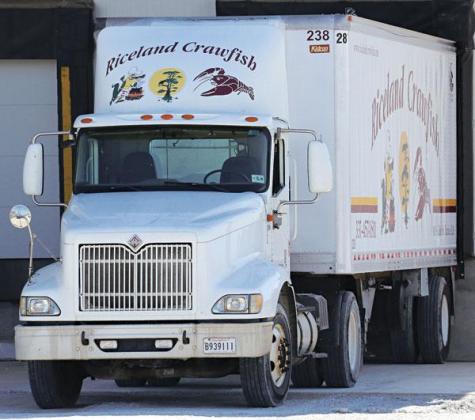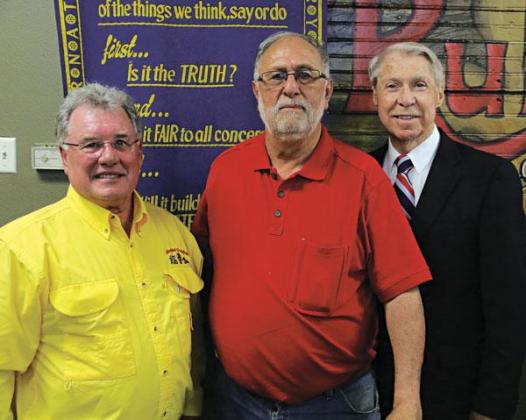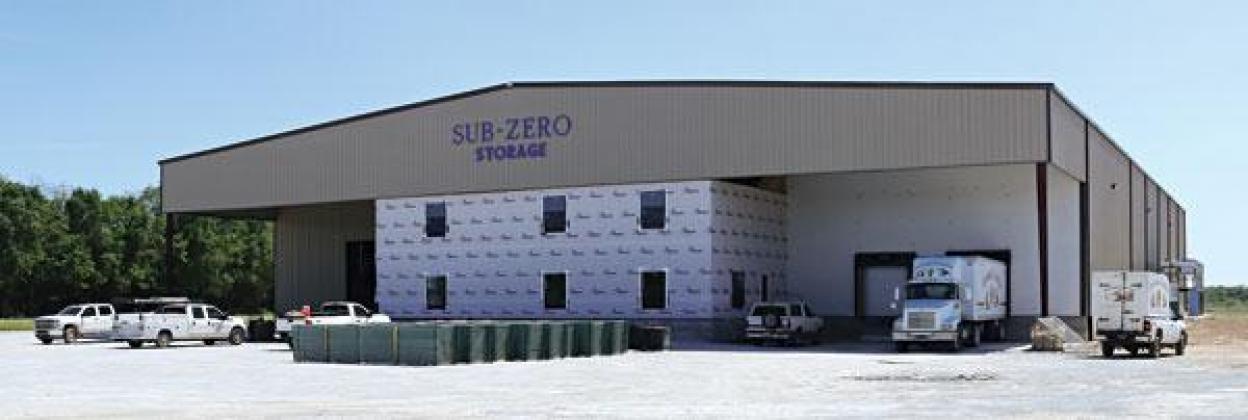


Harlan Kirgan
From the center of Eunice, Riceland Crawfish sends its crawfish and alligator products across the United States.
The Riceland Crawfish label literally puts Eunice on the map through Walmart and other retailers. Food service distributor Sysco handles Riceland’s products.
Dexter Guillory, owner and manager, said Riceland Crawfish has sales of about $17 million a year and in season, hires about 150 people, mostly temporary workers, he said at a recent Eunice Rotary Club meeting.
The business started in 1984 and from its Eunice location it has become a dominant player in the crawfish and alligator market.
Riceland’s market is nationwide and it has required certifications that attest to product quality.
“It is not as easy as selling to the guy down the street, but that’s the game we chose to play and it has paid off,” Guillory said.
“We are in Walmart and Sysco nationwide. We don’t do anything out of the U.S.,” he said.
Guillory said Riceland has had inquiries from Canada and Great Britain about its products.
And it is not all crawfish, which Riceland markets live, boiled and peeled.
The company sells about 35 percent of the alligator meat sold in Louisiana, he said
“All of the alligator market is controlled by the demand for hides. The hides set the size of the alligators being harvested, when they are getting harvested and the quality and value,” he said.
In the alligator market, the meat is a byproduct of the hides, he said.
The business has spawned a new facility on U.S. 190 east of Eunice that provides a visual clue to the scope of Riceland’s business.
Dwight Landreneau, Riceland’s food service auditor, said the Sub-Zero Storage facility is about 42,000 square feet in size. It’s big enough that trucks parked by it look like toys, he said.
The storage facility will be able to store about 3,000 pallets of food, he said.
Landreneau said Riceland has grown from a 7,500-square-foot plant that primarily sold live crawfish to a 53,000-square-foot plant that produces about 450,000 pounds of peeled meat a year.
It takes 7.25 pounds of live crawfish to yield a pound of tail meat, he said.
Over a year, Riceland:
— Distributes about 1.5 million pounds of whole boiled crawfish;
— Distributes 10 million pounds of live crawfish;
— Buys from 12 to 15 million pounds of crawfish from local producers;
— Sells about 1.5 million pounds of alligator meat;
— Sells from 150,000 to $175,000 crawfish traps.
Landreneau said Riceland produces a breaded frozen alligator product sold with a Country Boy label, which is an “excellent product” picked up by restaurants.
Guillory said, “You can find crawfish from Eunice, Louisiana, from Chicago to Florida, to Virginia to Washington State. Our product is very well received.”
“We try to use local businesses and support the local community before we go anywhere else,” he said.
Crawfish harvesting is “still a one man, one trap operation,” he said.
Processing crawfish remains a hands-on operation, he said. Attempts to develop a machine to peel crawfish have not been successful, he said.
But there have been improvements to the way the product is handled from cooking to packaging, he said.
Frozen tail meat is good for 18 to 24 months and frozen whole boiled crawfish are good up to a year and half, he said.
